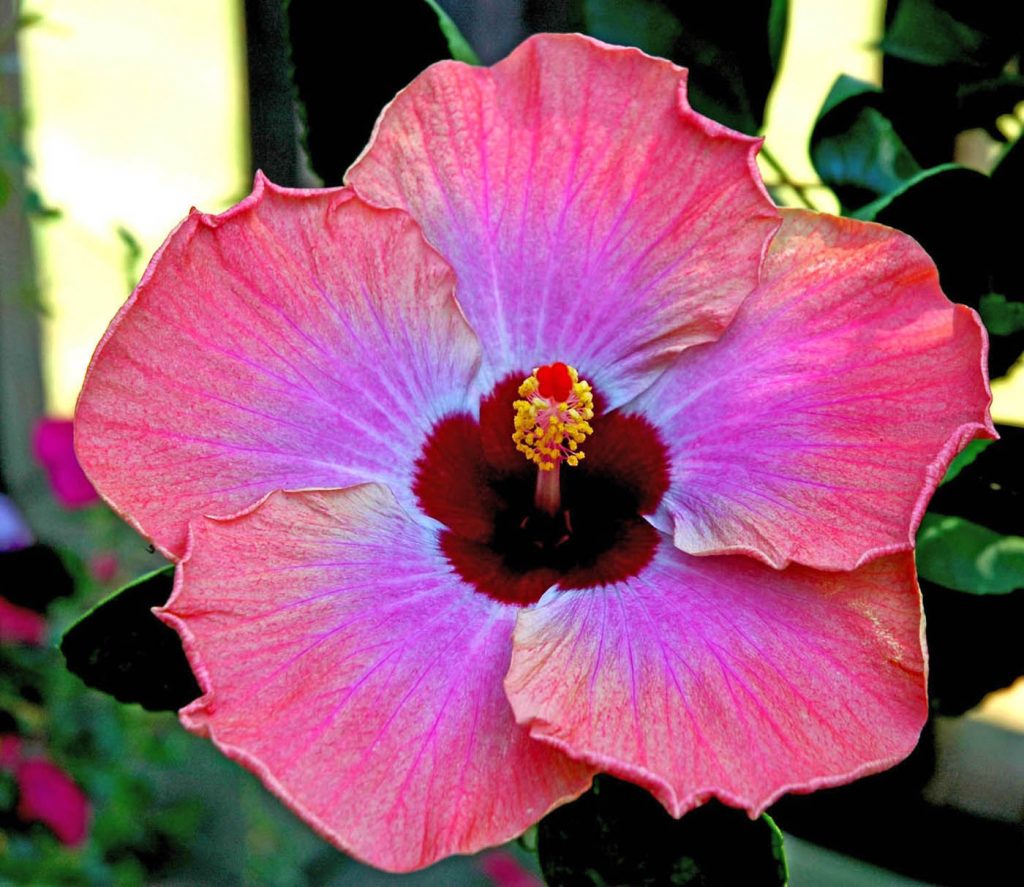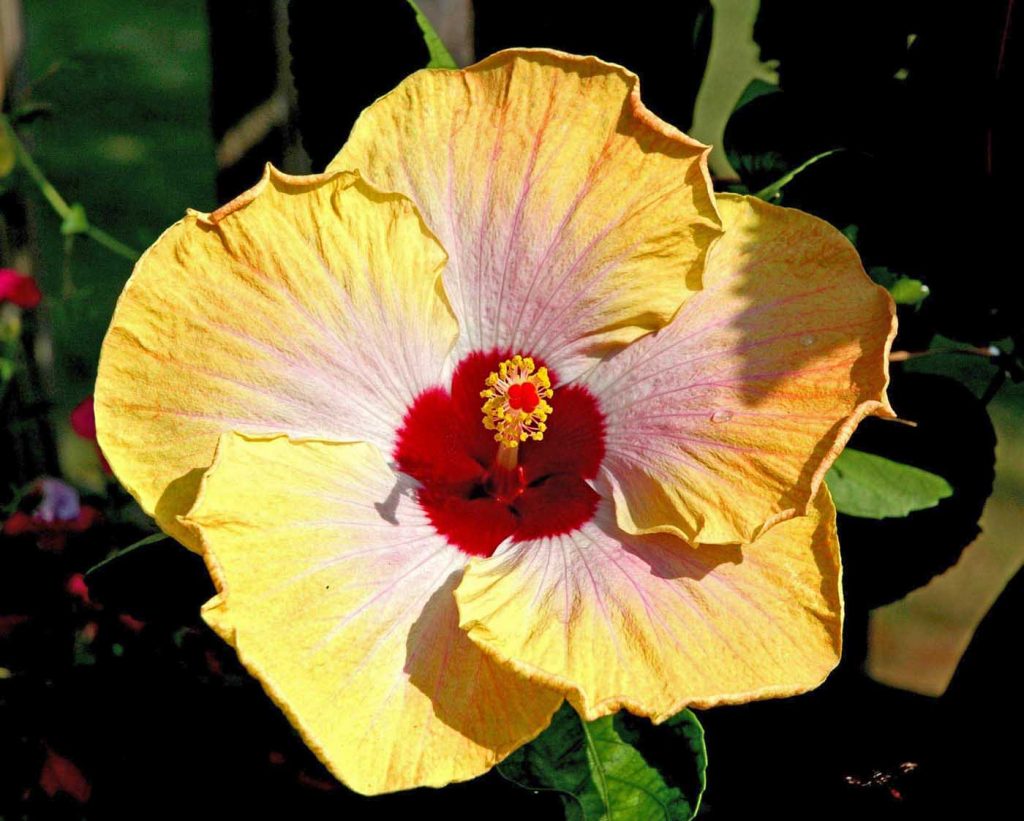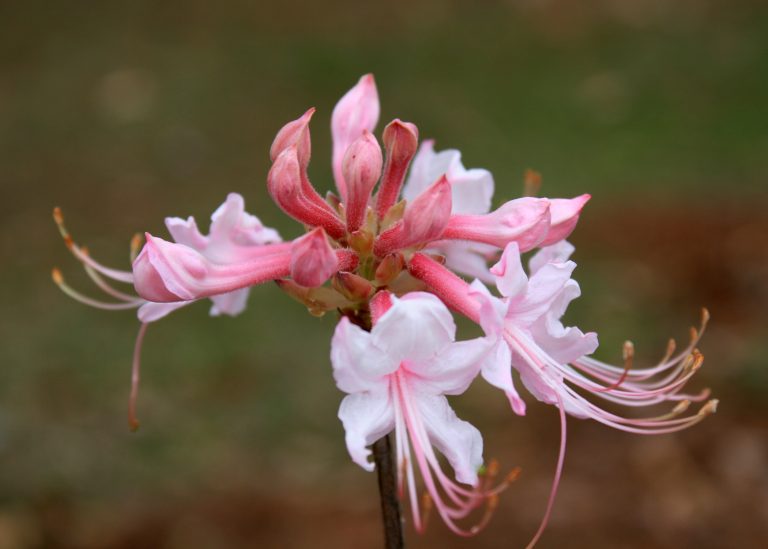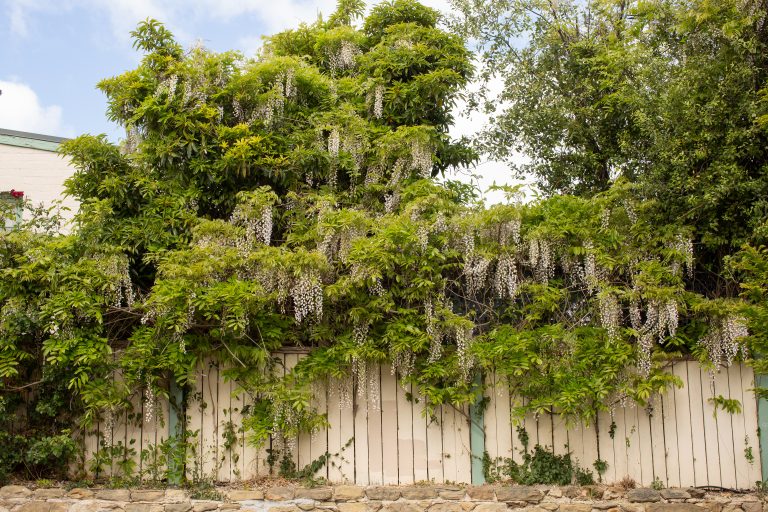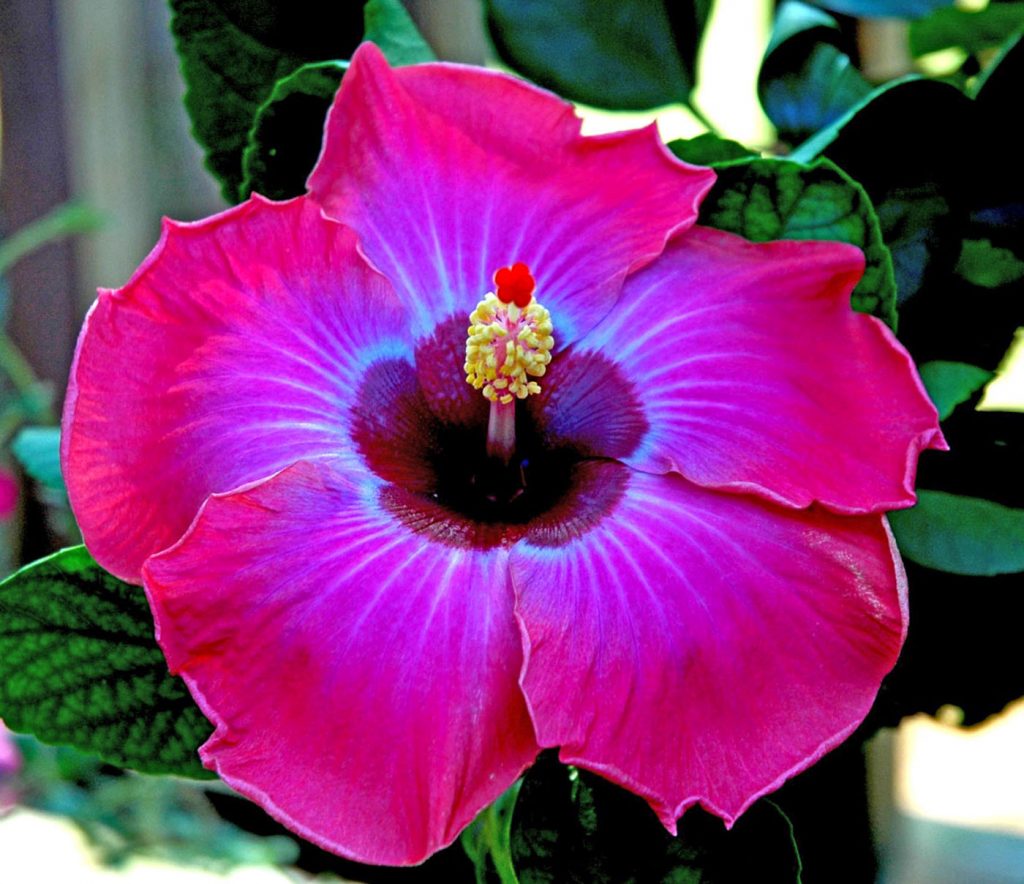
Rum Runner at 9 a.m. -- Rum Runner hibiscus starts out the morning with varying shades of magenta on the outside. As colors progress inward, they become lavenders, a starburst-like splash of iridescent blue and then a dark burgundy eye in the center.
by Bronwynne Bailey, Lafayette County Master Gardener
Hibiscus plants offer a rainbow of colors and petal shapes, each variety contributing a vivid and impactful display for your garden. Among the diverse types, the hardy hibiscus (Hibiscus moscheutos) is a tall shrub with 6–9-inch blooms, adding a dramatic flair to your landscape. The tropical hibiscus (Hibiscus rosa-sinensis) unfolds its petals to display dramatic colors, creating a stunning focal point. Meanwhile, the Rose of Sharon (Hibiscus syriacus) graces gardens with its sturdy, deciduous presence, extending a delicate beauty that evolves with the changing seasons. The fourth and last hibiscus in this series focuses on a woody species, (Hibiscus mutabilis) or confederate rose, a southern favorite.
In this column we focus on the tropical hibiscus. With its striking, brilliant flowers and shiny, dark green foliage, the tropical hibiscus lends an exotic nuance to the Mississippi garden. These are annual plants in zone 7B-8 so pot your hibiscus if you want to save it for future seasons. When potting, choose a large container as the hibiscus has a large and dense root system. The various selections feature bright yellows, pinks, reds, and whites. Varieties with color blends and unique colored eyes are stunning.
Colors & Varieties
There are hundreds of varieties of hibiscus with an extensive color palette. The flowers often combine shades to create the look of a tropical paradise. With combinations of reds, oranges, softer pinks, and yellows, each variety is unique. From fiery reds and oranges to soft pinks and yellows, each bloom is a work of genius. Some varieties include double-layered petals, adding layers of color bursts.

Growth Habits
While the hardy hibiscus tolerates dips in our winter temperatures, the tropical species will not. Plant as annuals or in large 12–16-inch containers.
Selecting the Right Location
Display in a location with 6 or more hours of sunlight. Shelter from harsh afternoon sun is beneficial.
Soil Preferences
Choose a well-draining potting mix with neutral to slightly acidic ph. Add organic matter to the mix to enhance soil fertility and drainage. Be sure the planting location or container drains readily. When growing in containers, plants can become waterlogged.
Planting Depth & Spacing
Locate the root ball level with the soil surface. Plants should be spaced to allow air circulation; this augments the visual effect and enhances plant health.
Watering Recommendation
Maintaining consistent root zone moisture is key for tropical hibiscus to flower through the season. A period of droughty weather will quickly turn off the flowering and cause any developing flower buds to drop off, and it may be hard to get it started flowering again. The watering needs will vary with the season—more in hot weather and less in the cooler months. Overwatering can cause buds to drop before the flowers fully open. Container-grown hibiscus may require more frequent watering.
Fertilizing
Apply a balanced fertilizer with micronutrients every 4-6 weeks, following package instructions for proper dosage. This will increase the number and size of the blossoms. Stop fertilization in late fall as the plant enters a period of dormancy.
Pruning
Pruning is essential to shape and size your plant for the container or location. Be sure to remove spent blooms to promote continued flowering. Heavy pruning should be done in late winter or early spring before new growth emerges.
Protecting from Pests
Watch for common pests such as aphids, scale, and spider mites. Regularly inspect the undersides of leaves for signs of infestation. Treat pests promptly with insecticidal soap or neem oil. Catching sight of pests early helps maintain the health and vigor of your tropical hibiscus.
There are hundreds of hibiscus varieties available. Norman Winter, MSU Horticulturist, captioned and captured these remarkable images of the tropical hibiscus, Rum Runner. There are striking color changes that occur throughout the day.

